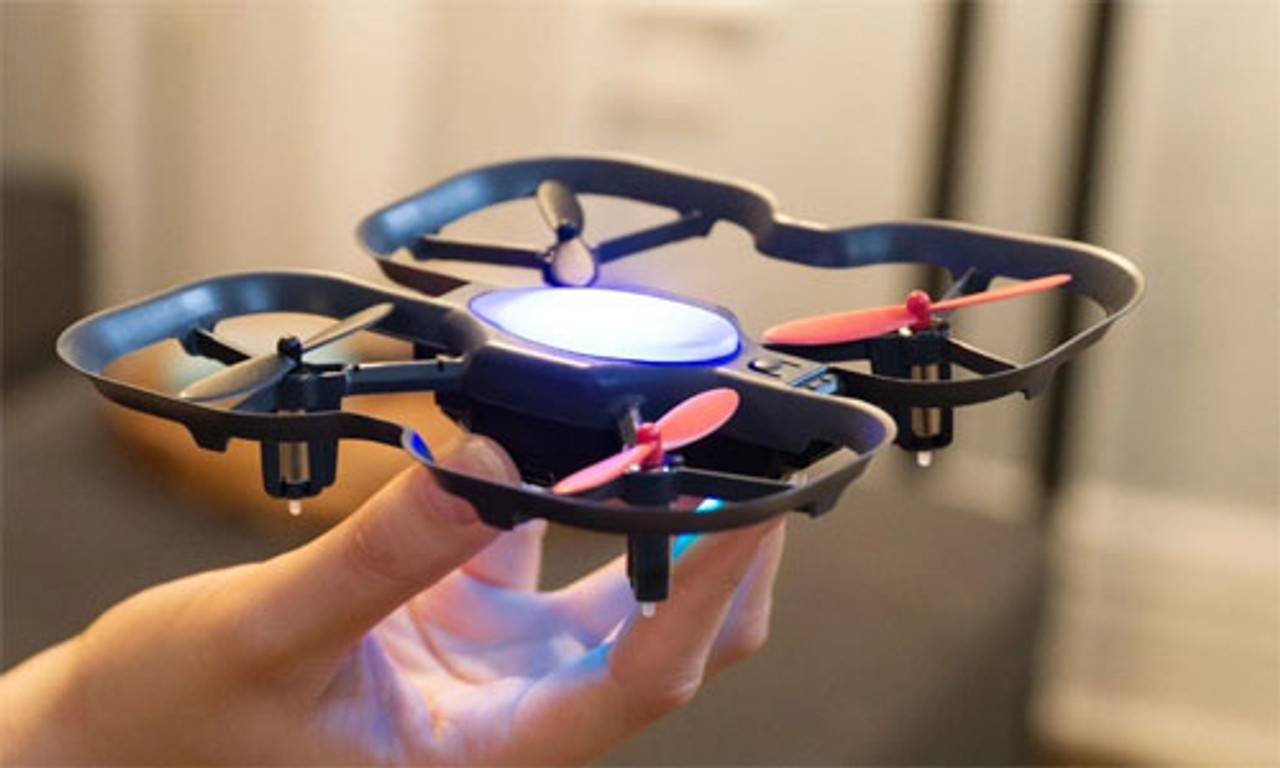CoDrone EDU, and What Makes it Different
Posted by Wes -- CPO of Robolink on 30th May 2024
Drones are a fun and engaging way to learn coding and engineering—you're moving around, things are flying, and you get to see your code come to life. However, there are also certain unique parameters about a classroom setting. These are things a typical small sub-$300 drone manufacturer doesn't need to think about because their target is the at-home user, not a classroom. Here's a super condensed version of the main things we learned from all those years of feedback.
- Safety is key. The teacher needs to feel confident and unafraid of the device they're using. Without safety, everything else is a non-starter.
- The drone has to be both durable and fixable. Students testing code will make mistakes. They should make mistakes—that's part of the engineering process. The drone design needs to have that in mind.
- Pairing needs to be quick. With classes changing, devices moving around, things being swapped, pairing should take little to no time.
- Signal stability is very important in a classroom of multiple devices. Bluetooth simply isn't stable enough for that.
- Sensors help make coding more exciting, since they are how you take input from the environment.
- Extra batteries are key. Without charged batteries, students are left waiting around.
It's safe
The drone weighs 2 ounces (57 g), and it fits in the palm of your hand. With the beefy guards, even when it crashes into walls, tables, or someone's arm, the propellers won't make direct contact. The guards help it stay bouncy when it does crash or fall to the ground. We've also built into the firmware a failsafe to have the drone's motors shut off when it detects a strong enough crash, and the motors won't spin when it detects that it's upside down.
Durable & Fixable
With the CoDrone Pro, we learned that educators really appreciated the fixability of the drone. However, we also learned there's a threshold where the parts become too modular. When all the parts can be swapped, it introduces too many opportunities for small inconsistencies in balance, weight distribution, and wear & tear of parts being inserted over and over that the drone loses its flight stability over time. With the CoDrone EDU, the parts are more complete pieces, while remaining modular enough that a motor and propeller can still be swapped as needed.
Pairing is easy
With the CoDrone EDU, once you pair the drone to the controller, they stay paired any time both are powered on. You won't have to re-pair them every time you power on. This saves countless minutes that accumulate over class time, where students have to pair every time they start a class, swap a battery, unplug a controller, switch drones, etc. We know those minutes add up.
Connection stability in the classroom
We use a radio signal for the CoDrone EDU, which offers much stronger signal stability for the classroom setting. You won't have to worry about dropping your connection when there are multiple drones in the room or having to re-pair your drone when a connection drops. In our tests, we were able to get up to 15 drones in a classroom—not that we recommend flying that many at once!
Pro tip: we recommend having a flying half of the room and a programming half of the room. This way, the people with their heads down aren't in the same area where drones are flying around overhead.
Useful & interesting sensors
If sensors are your input, then sounds and LEDs are your output. With the drone's LED and ability to generate sounds, you can use them to code different cues and notifications for when certain things are detected and triggered. Imagine landing on a field of crops and detecting that the crops below are yellow instead of green. You program the LED to blink red, and the drone plays an alert sound, letting the pilot know that this crop needs more water. These audio and visual cues will really help with activities based on applications like equipment inspection, agriculture, and more.
Programmable sounds & LEDs
If sensors are your input, then sounds and LEDs are your output. With the drone's LED and ability to generate sounds, you can use them to code different cues and notifications for when certain things are detected and triggered. Imagine landing on a field of crops, detecting that the crops below are yellow instead of green. You program the LED to blink red, and the drone plays an alert sound, letting the pilot know that this crop needs more water. These audio and visual cues will really help with activities based around applications like equipment inspection, agriculture, and more.
Educator-focused content
We know that educators need content and standards-aligned material to plan out their lessons. Lots of actives and curriculum available.
By integrating the use of a drone landing pad, educators can further enhance the safety and precision of their drone operations, ensuring a smooth takeoff and landing every time.
=================================================================








